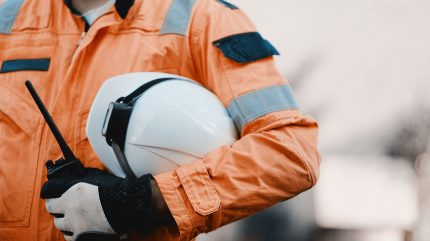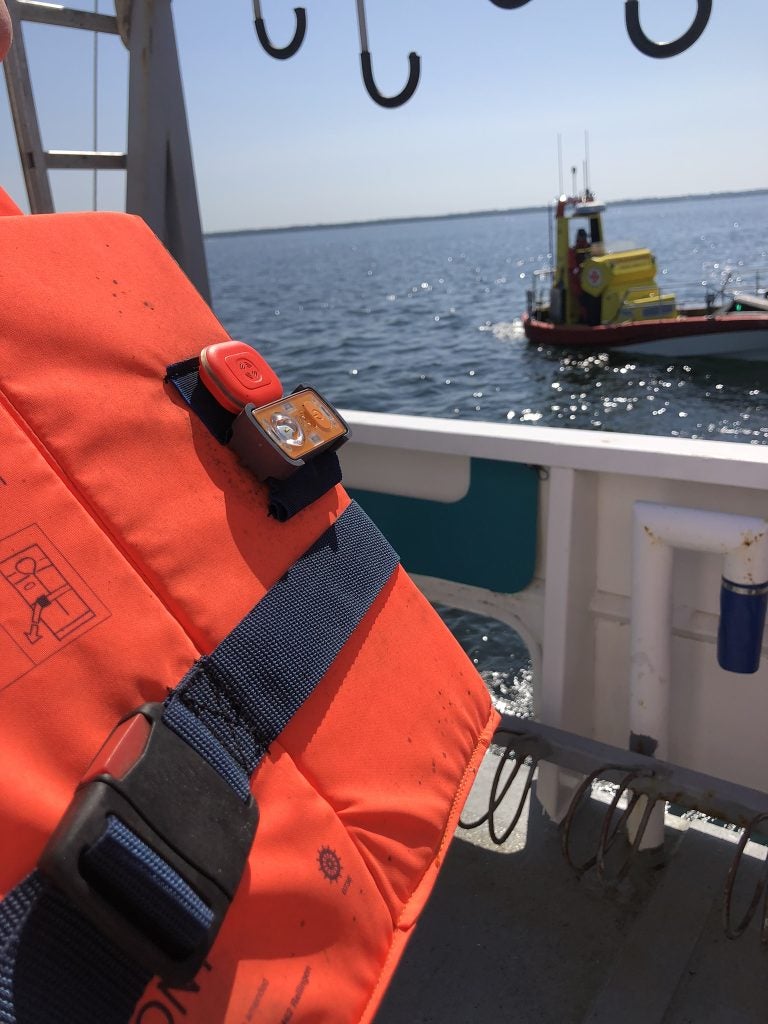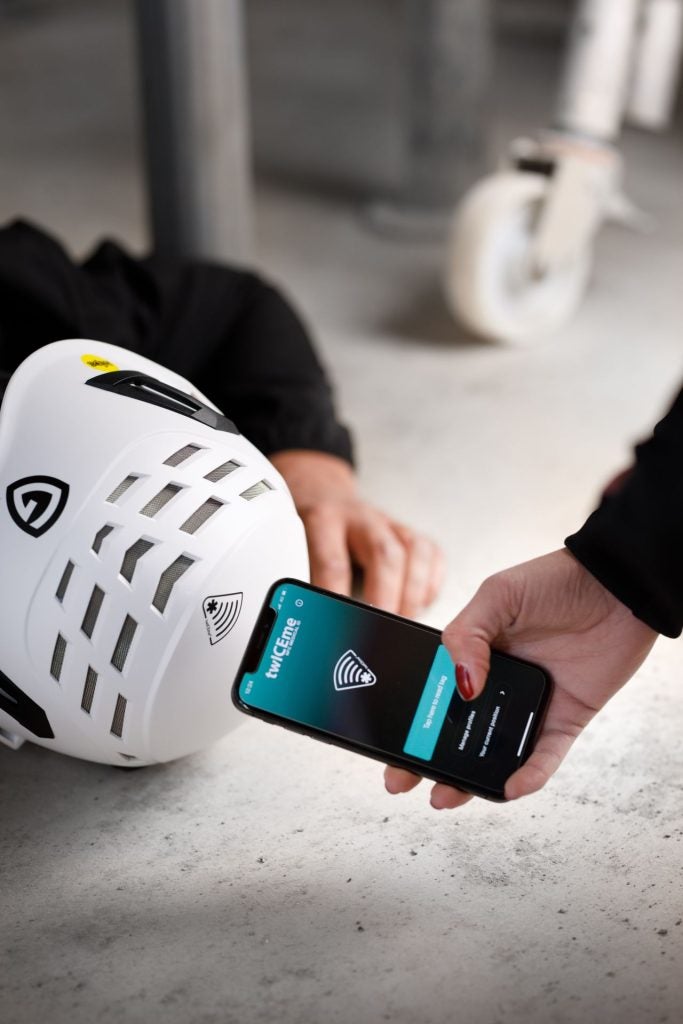
Safety risks for maritime workers are essential every on and offshore. Ports present hazards, with persistently shifting heavy a whole lot and the operation of monumental tools, equal to achieve stackers, straddle carriers, and cranes. On board vessels, the dynamic nature of the environment, blended with laborious surfaces which will merely develop to be moist and slippery, add to the risks. Nonetheless, wearable tech is increasingly being adopted to combat these dangers.
The specialised nature of many roles moreover implies that workers could should operate in elevated areas, normally requiring them to climb stairs or ladders, extra rising the hazards they encounter.
In gentle of this, it’s important for workers to remain persistently vigilant, well-trained in safety practices and in frequent communication with every colleagues and strategies. Over newest years the maritime sector has turned to wearables to help enhance safety and security for seafarers, along with to reinforce operations.
Bettering safety by means of wearable tech
Safety throughout the maritime commerce always comes first, nonetheless even with proper this second’s safety procedures, teaching and equipment, incidents, misplaced time harm (LTI) and near-miss numbers normally aren’t happening, says Anders Schening, CEO of experience company LifeFinder.
“There are moreover new risks rising, equal to cargo fires introduced on by merchandise with batteries, like electrical autos, and risks from new fuels developed to fulfill zero-emission targets, equal to synthetic pure gasoline (SNG), e-ammonia and e-methanol.
“Elevated transport and stress are moreover a component,” he continues, “with Lloyd’s Register’s Safetytech Accelerator reporting that 75% of all incidents happen in high-traffic areas near shore.”
Entry basically essentially the most full Agency Profiles
within the market, powered by GlobalData. Save hours of research. Obtain aggressive edge.

Agency Profile – free
sample
Your acquire e-mail will arrive shortly
We’re assured regarding the
distinctive
prime quality of our Agency Profiles. Nonetheless, we wish you to make the most of
helpful
dedication in your small enterprise, so we offer a free sample which you could possibly acquire by
submitting the beneath kind
By GlobalData

Know-how can play a key operate in enhancing safety throughout the maritime sector, he says, occurring to make clear that it’s not about altering any of the prevailing safety merchandise, routines, or teaching – nonetheless pretty together with to them.
“Know-how may assist detect factors earlier, tempo up responses, and have further detailed knowledge for rescue operations,” he says. “It’ll even be used to help forestall accidents, by means of utilizing good sensors, wi-fi utilized sciences, and even artificial intelligence (AI).”
It performs an essential operate in enhancing safety by providing superior devices for real-time monitoring, information analysis, and hazard mitigation.
“Enhancements equal to native positioning strategies (LPS), superior sensors and built-in safety administration platforms are serving to operators make educated alternatives and forestall potential hazards,” gives Filippo Bonifacio, CEO of Superior Microwave Engineering (AME).
Wearable tech: saving lives and money
That’s the reason Schening created the company LifeFinder, which blended sensors, wi-fi and positioning tech to create a software suited to the extraordinary conditions and use cases found contained in the maritime commerce.
Its Emergency Crew Locator System might be utilized to search out folks misplaced or all through an emergency, which in flip may assist reduce the time it takes to deploy safety strategies like a CO2 extinguishing system, by providing a dwell account of the location of all crew members.
“It’s not solely about saving lives and decreasing accidents, it’s moreover helpful in providing financial benefits,” he says. “For example, we realized from one purchaser that decreasing the time it takes to find a crew member or detect a cargo fireside may save costs of one thing from $100,000 to over $1m.”
It’s not solely about saving lives and decreasing accidents, it’s moreover helpful in providing financial benefits.
Further wearable models are coming to the market, nonetheless with some together with weight and potential complexity to their job, there are workers towards together with ‘yet another machine’ to their garments or gear. One decision has been to mix experience into the devices workers are already sporting in these environments, equal to helmets, harnesses, and vest
Twiceme is one such provider of merchandise on this area. The company makes use of next-generation near-field communication (NFC) experience to permit devices to retailer knowledge on them and the staff using it.
“All through a medical emergency, people can work along with the gear using a mobile machine, to be taught useful particulars in regards to the wearer, equal to present medical conditions or allergic reactions,” says Christian Connolly, CEO of Twiceme.
“This type of knowledge is invaluable if any person’s incapacitated – serving to responders make larger and faster alternatives. Furthermore, when paired with a worker’s smartphone, it could be used to repeatedly remind them to look at their gear, serving to workers familiarise themselves with their gear, whereas serving to companies meet safety requirements and instilling a practice of safety on the job.”
Proactive hazard low cost
One different fascinating decision is the Amesphere system, which provides real-time knowledge and alerts using LPS sensors and tags. Unaffected by the street of sight or local weather conditions, it permits real-time hazard analysis, along with visibility previous obstacles and in poor conditions.
“Amesphere integrates a sensor on the automotive and a present throughout the cabin, alerting the operator to the presence and place of workers equipped with tags, or totally different autos,” says Bonifacio.
“Data collected is processed in real-time by cloud software program program, providing important knowledge to safety and logistics managers. Intuitive dashboards generate notifications and preventive alerts to help improve safety and operational effectivity, together with detailed tales and heatmaps that set up high-risk areas and monitor safety effectivity, reworking information into useful knowledge for proactive movement and hazard low cost.”

Whereas there are a variety of technological choices already accessible to reinforce safety in maritime, the reality is we’re nonetheless solely at first, says Schening. He elements to the automotive commerce, which has been using sensors for higher than 20 years in strategies equal to anti-lock braking strategies (ABS), digital throttle administration (ETC), and collision warnings.
Wearable tech is only a instrument, he notes, nonetheless an important one and we’re in a position to anticipate to see many extra developments in port and ship safety by means of the mixture of advancing utilized sciences, along with, nonetheless not restricted to, AI and machine finding out (ML).
“These will enhance predictive capabilities, allowing for further right forecasts of potential hazards and computerized hazard assessments,” says Bonifacio.
“Further refined information sharing strategies between terminals and maritime authorities may even facilitate larger coordination and extra sensible responses to rising risks.”
This textual content was initially revealed in our digital journal, Ship Know-how Worldwide. It’s possible you’ll subscribe to the journal with out price by clicking proper right here.

